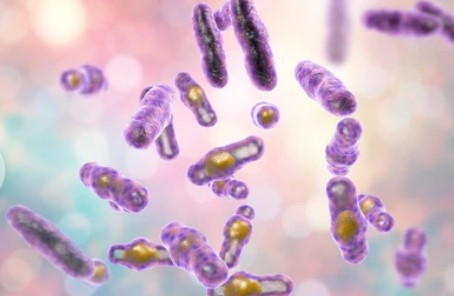Clostridium difficile Infection (CDI)

Clostridioides difficile infection (CDI) is a complex bacterial infection that is most commonly associated with the colon and manifests through a plethora of symptoms from modest diarrhea to fulminant colitis. It is known to occur after antibiotic therapeutics because they disturb the gut flora, and then C. difficile can take over. We are ready to meet your drug and therapy development needs on Clostridium difficile infection.
Overview of Clostridium difficile Infection
The infection caused by Clostridium difficile has remained one of the prominent health concerns affecting individuals across the world and its prevalence varies depending on geographic location. Clostridium difficile (Clostridioides difficile) is a potent gastrointestinal tract pathogen and is an anaerobic, spore-forming Gram-positive bacterium. More than 15,000 cases of CDI are documented each year according to the Emerging Infections Program which represents approximately 15%-25% of worldwide antibiotic associated infectious diarrhea.
Pathogenesis of Clostridium difficile Infection
The pathogenicity of Clostridioides difficile depends mainly on its two proteins toxins, TcdA and TcdB. These three proteins have distinct but important actions in the disease process. TcdB is an enterotoxin that disrupts the host cell cytoskeleton by glycosylating Rho family GTPases. This results in heightened inflammation, increased leaks, epithelial shedding, and in digestion that leads to diarrhea and other symptoms associated with C. difficile infection.
 Fig. 1 The mechanisms of pathogenicity of toxins in C. difficile. (Yang, J. and Yang, H., 2019)
Fig. 1 The mechanisms of pathogenicity of toxins in C. difficile. (Yang, J. and Yang, H., 2019) Therapeutics for Clostridium difficile Infection

Antibiotic Therapy: The leading therapeutic options for Clostridium difficile infection (CDI) include metronidazole, vancomycin, and fidaxomicin as their performance with the infection is relatively high along with a short maximum therapeutic duration. Evidence suggests that teicoplanin and fidaxomicin outperform vancomycin for sustained CDI in treating the infection's relapse and that fidaxomicin works best in severe cases and among high-risk individuals. In conclusion, fidaxomicin, vancomycin, and metronidazole are the broad-spectrum antimicrobial agents most commonly used for CDI therapeutic and management.
Fig. 1 Rank of therapeutic drugs used in Clostridioides difficile infection (red) according to their effectiveness, along with their probability of being the optimal treatment (blue, P score). (Chen, J., et al., 2022)
Table. 1 Advantages and disadvantages of different non-antibiotic therapies.
| Non-antibiotic therapies | Advantages | Disadvantages | Main mechanism |
|---|---|---|---|
| Fecal microbiota transplantation (FMT) Probiotics | Provides a high cure rate for rCDI, with rapid action and prevention of recurrence. Cost-effective, age-inclusive, and can be used as a dietary supplement. | Costly and complex procedure, not suitable for infants, and has mild side effects. | Restores normal microbiome and metabolites, achieves homeostasis. Various probiotic activities, antibacterial, boosts immune system, aids in restoring normal microbiome. |
| Engineered microorganisms | Target C. difficile with high precision | High cost, complex manufacturing process, and lacks clinical validation. | Directly modifies the genetics of microorganisms to target specific pathogens. |
| Bacteriophage | Effective against multiple resistant bacteria with a notable curative effect. | Lacks a well-understood mechanism of action, has not undergone sufficient safety assessments. | Bacteria lysis |
| Nanoparticles and compounds | Inhibits C. difficile, causes minimal body damage, and shows significant therapeutic effects in vitro. | Lack of clinical validation | Directly targets pathogen cells, induces cell damage, and destroys the pathogen without disrupting the normal microbiome. |
Our Services
Our team works in all therapeutic areas, and that is what makes us stand out in the market with our custom and innovative therapies of Clostridium difficile infection. We endeavor to assist our clientele from the very first step of the developmental process where effective and specific solutions are strategized.
Platforms of Clostridium difficile infection Therapy Development
Animal Models of Clostridium difficile infection
We can assure you that our background and experience in developing and using animal models exhibiting the disease and therapeutic responses of Clostridium difficile infection is huge. These models provide an accurate means of assessing candidate therapy safety and efficacy.
| Non-Genetically Engineering Models | ||
|---|---|---|
| We provide an array of models designed to meet specific research requirements for Clostridium difficile infection. These models allow researchers to replicate and study the intricate biological processes associated with the disease. | ||
| Optional Models |
|
|
| Optional Species | Mice, Rabbits, Non-human primates, Others | |
In addition, we offer a range of comprehensive animal model services that concentrate on specific signaling pathways and molecular targets.
If you are interested in our services, please contact us at your earliest convenience for more information.
References
- Chen, J., et al., "Recent development of small-molecular inhibitors against Clostridioides difficile infection." Bioorg Chem, (2022). 125: p. 105843.
- Yang, J. and Yang, H., "Non-antibiotic therapy for Clostridioides difficile infection: a review." Crit Rev Clin Lab Sci, (2019). 56(7): p. 493-509.
All of our services and products are intended for preclinical research use only and cannot be used to diagnose, treat or manage patients.
